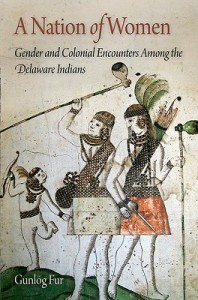 Part I, Part II, Part III, Part IV, Part VIn this week’s discussion of Gunlog Fur’s A Nation of Women: Gender and Colonial Encounters Among the Delaware Indians, we get to the topic of why the Delaware referred to themselves, and were referred to by other Indians, as “a nation of women.”To understand even partially how gender was perceived by seventeenth and eighteenth century Delaware, it is also necessary to appreciate the rigidity of European conceptions of gender roles at that time – in itself a stretch for the twenty-first century mind.The Delaware were known by Iroquois and other Algonquian tribes as “A Nation of Women.” This was not, originally, a derogatory term but an appellation which referred to Delaware willingness and skill in negotiating peace agreements for themselves and between other nations. In the Delaware tradition men were the war captains and women the peace negotiators. Although women did occasionally fight, as givers and nurturers of new life women were considered more suited for the peace giving role. More importantly, the same person could not be permitted to fight and to negotiate peace. It was believed that allowing a warrior to partake in diplomatic efforts would result in either cowardice or perpetual warfare. The power of the war chief must be balanced by the peace chief, and so an individual trained for one path or the other.It is difficult to know the details of women’s involvement in treaty negotiations with Europeans because women are written out of white male accounts, and these historians would not have recognized women’s influence or understood Delaware power dynamics at any rate. British accounts usually list the men involved and do not even mention the presence of women, although in some instances they refer to “sundry women and children” accompanying the Indian men. Other European accounts are more inclusive, but they too focus on men, and Eurocentric gender bias has meant that until recently persons noted by their Indian name were assumed to be male. What is clear is that white men’s preference for dealing with other men on matters of import put Delaware men in a prominent position in these negotiations. (Although Fur doesn’t mention this, I wondered if one of the reasons that Delaware men were negotiating with white men was that European powers sent only men as representatives.) The only way white men could understand women in a position of power was in instances where social class and rank trumped male authority: thus they referred to women who obviously wielded power during negotiations as “queens.” Whether through imprecision in the translation of terms or lack of recognition of the rigidity of European gender boundaries, Delaware men began referring to themselves as queens when engaging in diplomacy.One story that sharply illustrates the dichotomy between Delaware and European attitudes towards gender comes from an oral history recorded in the early twentieth century. In this Delaware account of an outbreak of violence with white settlers, the violence had escalated to an unacceptable level when women on both sides met to explore ways of ending the conflict. They reached an agreement in principle, and so the next day men and women from both sides met to ceremonially formalize the agreement. Details of this oral history are recognizable in a written account of a seventeenth century conflict with Swedish colonials, but there is no mention of any substantive involvement of a woman anywhere. Whether these two accounts do indeed refer to the same incident or not, they illustrate the degree of gender bias in written documents of the time.During diplomacy meetings men sometimes donned ceremonial women’s clothing or carried implements symbolizing women’s roles such as gourds or hoes. They addressed other Delaware men during these formal meetings as “sister” and used words denoting family affiliations such as “sister’s daughter” or “cousin on distaff side” when addressing other Indians. Note that these feminine terms of address referred to matrilineal family relationships, rather than marriage, as metaphors.Inevitably with increased white contact the word “woman” began being used as an epithet toward Delaware men. This was especially true of the Six Nations Iroquois, with their strong British alliance. The British of all the colonials were most critical of anything suggestive of “unmanliness,” a word for which there was no equivalent in Delaware. This culminated in a huge land grab by the British in the mid-eighteenth century which the Iroquois facilitated, justifying the action with the novel legal argument that as women Delaware had no right to own property. (The Iroquois knew such an argument had no validity even among their own people, but they also understood its appeal to their British allies.) Fur devotes some space to speculating why Delaware continued to refer to themselves as “a nation of women” for half a century after the phrase began being used in a derogatory sense, but in my opinion Delaware were just considering the source of the epithet. There was no love lost between Iroquois and Delaware even before European arrivals intensified the conflicts, and Delaware had worse names for the Iroquois than “women.” And despite their high regard for William Penn, by the early 1700s Delaware had voted the English their least favorite white people. It might not have occurred to them to change their perception and presentation of themselves to placate people they held in similarly low regard.Some white men were highly annoyed by belittling terms meaning “women” directed toward Delaware men, especially men who had fought against the Delaware and respected their ferocity on the battlefield. There was a rehabilitation of the Delaware image by some whites in the nineteenth century, and this is where the scary warriors in Last of the Mohicans come in. The argument that “Delaware men could not have been women because they were good fighters” misses the point however. It was precisely because they commanded respect among other nations as warriors that Delaware collectively were allowed to take on the role of “women.”Next week really will be the last week for discussing this book. We will take a further look at what sex and gender meant to the Delaware Indians.
Part I, Part II, Part III, Part IV, Part VIn this week’s discussion of Gunlog Fur’s A Nation of Women: Gender and Colonial Encounters Among the Delaware Indians, we get to the topic of why the Delaware referred to themselves, and were referred to by other Indians, as “a nation of women.”To understand even partially how gender was perceived by seventeenth and eighteenth century Delaware, it is also necessary to appreciate the rigidity of European conceptions of gender roles at that time – in itself a stretch for the twenty-first century mind.The Delaware were known by Iroquois and other Algonquian tribes as “A Nation of Women.” This was not, originally, a derogatory term but an appellation which referred to Delaware willingness and skill in negotiating peace agreements for themselves and between other nations. In the Delaware tradition men were the war captains and women the peace negotiators. Although women did occasionally fight, as givers and nurturers of new life women were considered more suited for the peace giving role. More importantly, the same person could not be permitted to fight and to negotiate peace. It was believed that allowing a warrior to partake in diplomatic efforts would result in either cowardice or perpetual warfare. The power of the war chief must be balanced by the peace chief, and so an individual trained for one path or the other.It is difficult to know the details of women’s involvement in treaty negotiations with Europeans because women are written out of white male accounts, and these historians would not have recognized women’s influence or understood Delaware power dynamics at any rate. British accounts usually list the men involved and do not even mention the presence of women, although in some instances they refer to “sundry women and children” accompanying the Indian men. Other European accounts are more inclusive, but they too focus on men, and Eurocentric gender bias has meant that until recently persons noted by their Indian name were assumed to be male. What is clear is that white men’s preference for dealing with other men on matters of import put Delaware men in a prominent position in these negotiations. (Although Fur doesn’t mention this, I wondered if one of the reasons that Delaware men were negotiating with white men was that European powers sent only men as representatives.) The only way white men could understand women in a position of power was in instances where social class and rank trumped male authority: thus they referred to women who obviously wielded power during negotiations as “queens.” Whether through imprecision in the translation of terms or lack of recognition of the rigidity of European gender boundaries, Delaware men began referring to themselves as queens when engaging in diplomacy.One story that sharply illustrates the dichotomy between Delaware and European attitudes towards gender comes from an oral history recorded in the early twentieth century. In this Delaware account of an outbreak of violence with white settlers, the violence had escalated to an unacceptable level when women on both sides met to explore ways of ending the conflict. They reached an agreement in principle, and so the next day men and women from both sides met to ceremonially formalize the agreement. Details of this oral history are recognizable in a written account of a seventeenth century conflict with Swedish colonials, but there is no mention of any substantive involvement of a woman anywhere. Whether these two accounts do indeed refer to the same incident or not, they illustrate the degree of gender bias in written documents of the time.During diplomacy meetings men sometimes donned ceremonial women’s clothing or carried implements symbolizing women’s roles such as gourds or hoes. They addressed other Delaware men during these formal meetings as “sister” and used words denoting family affiliations such as “sister’s daughter” or “cousin on distaff side” when addressing other Indians. Note that these feminine terms of address referred to matrilineal family relationships, rather than marriage, as metaphors.Inevitably with increased white contact the word “woman” began being used as an epithet toward Delaware men. This was especially true of the Six Nations Iroquois, with their strong British alliance. The British of all the colonials were most critical of anything suggestive of “unmanliness,” a word for which there was no equivalent in Delaware. This culminated in a huge land grab by the British in the mid-eighteenth century which the Iroquois facilitated, justifying the action with the novel legal argument that as women Delaware had no right to own property. (The Iroquois knew such an argument had no validity even among their own people, but they also understood its appeal to their British allies.) Fur devotes some space to speculating why Delaware continued to refer to themselves as “a nation of women” for half a century after the phrase began being used in a derogatory sense, but in my opinion Delaware were just considering the source of the epithet. There was no love lost between Iroquois and Delaware even before European arrivals intensified the conflicts, and Delaware had worse names for the Iroquois than “women.” And despite their high regard for William Penn, by the early 1700s Delaware had voted the English their least favorite white people. It might not have occurred to them to change their perception and presentation of themselves to placate people they held in similarly low regard.Some white men were highly annoyed by belittling terms meaning “women” directed toward Delaware men, especially men who had fought against the Delaware and respected their ferocity on the battlefield. There was a rehabilitation of the Delaware image by some whites in the nineteenth century, and this is where the scary warriors in Last of the Mohicans come in. The argument that “Delaware men could not have been women because they were good fighters” misses the point however. It was precisely because they commanded respect among other nations as warriors that Delaware collectively were allowed to take on the role of “women.”Next week really will be the last week for discussing this book. We will take a further look at what sex and gender meant to the Delaware Indians.
Month: December 2013
Owl Calls From Cornell Ornithology
December 26, 2013Happy Solstice
December 21, 2013Zero is the New Queer
December 20, 2013The whole of the universe should be represented by the number zero rather than the number one. When I ran across this contention on the blog of a pagan queer theorist (a queerist?) I decided to ignore this incredible statement, once my head stopped exploding, because it is, er – not credible. But since this idea has actually been seriously entertained by a few other people, I’m going to address it. I will not link to the post, even though the author proudly took credit, because I’m embarrassed for zhir.
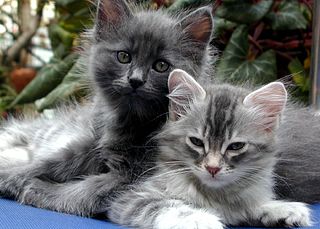


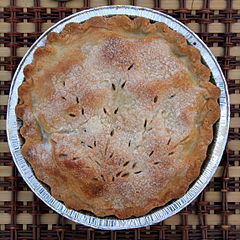
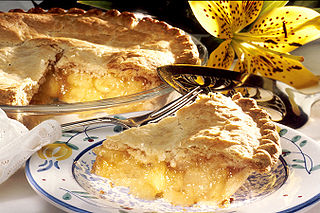 But maybe the source of the confusion comes from the symbol 0, which sortof looks like a pie. It’s the kind of mistake a child would make. You might infer, if you didn’t know any better, that the symbol 0 is defined as the number one, a word which has an O in it. Those of us who are not queerists pay attention in the first grade, at least one-fifth of the time, so we learn our numbers 1, 2, 3, 4, 5, etc., and we use the symbol 0 to designate nothing or as a place-holder. I recommend the first grade to everyone who still calls themselves “queer” and thinks it means something other than “I’m an idiot.” It might mean no longer embarrassing yourself, or zhir-self, or whOever zoo say zoo are.
But maybe the source of the confusion comes from the symbol 0, which sortof looks like a pie. It’s the kind of mistake a child would make. You might infer, if you didn’t know any better, that the symbol 0 is defined as the number one, a word which has an O in it. Those of us who are not queerists pay attention in the first grade, at least one-fifth of the time, so we learn our numbers 1, 2, 3, 4, 5, etc., and we use the symbol 0 to designate nothing or as a place-holder. I recommend the first grade to everyone who still calls themselves “queer” and thinks it means something other than “I’m an idiot.” It might mean no longer embarrassing yourself, or zhir-self, or whOever zoo say zoo are.
A Nation of Women (part V)
December 13, 2013 Another segment of my review/summary of Gunlog Fur’s A Nation of Women: Gender and Colonial Encounters Among the Delaware Indians Here are the links for Part I, Part II, Part III, and Part IV.Marriage is the central organizing principle of patriarchy, and Moravians were attempting to express their ideals of equality within this framework. They saw marriage as having deep spiritual as well as social significance. The married couple and their children were the basic family unit, with the larger church congregation making up the extended family. In contrast, Delaware not only traced their lineage through their mothers, but considered their maternal clan to be their primary family – even in adulthood, even after marriage. When long distance dislocations began occurring due to loss of land, men usually went with their maternal clan rather than remaining with their wives and offspring, leading missionaries to view them as abandoning their families. Delaware men were not indifferent to their wives’ children, but their primary obligation was to the children of their sisters. The large maternal family included both converts and relatives critical of the new religion, which prompted missionaries to stress even more that converts should view marriage and church as their true family. Because Christians offered a dual framework where traditional Indians went to Hell and converted Indians went to Heaven, missionaries were accused of breaking up families in this world and in the afterlife. Missionaries were asking their converts to change their conception of family precisely at a time when loss of land was making traditional family ties more important.Missionaries saw Delaware enthusiasm for travel as threatening to the nuclear family unit, as well as interrupting patterns of worship. Delaware women and men traveled to visit sick relatives, to attend councils and festivals, and to maintain social and family ties. Delaware men would be absent from their village for weeks or even months at a time on hunting expeditions. With women directing food production and male responsibilities in the village conferred mainly through age and experience, it is easy to see how attractive long hunting parties would have been for young men. Close same-sex friendships were a natural part of life for people spending long stretches of time in sex segregated activities, and sometimes these friendships found erotic expression. Fur cannot tell us what degree of significance homosexual activity had for the Delaware, but predictably the missionaries were horrified.For all of these reasons – stability of the nuclear family, reliance on the church congregation, rhythm of Christian worship activities, discouragement of homosexuality, and no doubt their own cultural prejudices – missionaries were eager to make farmers out of Delaware men. The sticky widget was that Delaware women were unwilling to relinquish their authority over agricultural activities. Moravians did not wish to emasculate Delaware men and exhorted women to accept a more subordinate role, usually meeting strong resistence.Both traditional Delawares and missionaries encouraged young people to marry. An eligible young person in a Christian Delaware family could expect frequent introductions to suitable partners arranged by both his or her maternal grandmother and a male missionary, both working independently. Of course the missionary and the grandmother held different views on what constituted a suitable partner. For the maternal grandmother, keeping track of complex family relations to avoid transgressing incest taboos was paramount. A secondary but still important consideration was strengthening family friendships. The missionary was most concerned with matching committed Christians to one another, to avoid losing a convert due to family pressures. The missionary complained in letters and diaries about interference from maternal clan leaders in matchmaking activities he considered his rightful prerogative as Christian leader of the community. We do not have diaries for the grandmothers, but it is easy to infer that they would have had similar words for the male missionary.This discussion about marriage will provide background for the next two posts about gender.
Another segment of my review/summary of Gunlog Fur’s A Nation of Women: Gender and Colonial Encounters Among the Delaware Indians Here are the links for Part I, Part II, Part III, and Part IV.Marriage is the central organizing principle of patriarchy, and Moravians were attempting to express their ideals of equality within this framework. They saw marriage as having deep spiritual as well as social significance. The married couple and their children were the basic family unit, with the larger church congregation making up the extended family. In contrast, Delaware not only traced their lineage through their mothers, but considered their maternal clan to be their primary family – even in adulthood, even after marriage. When long distance dislocations began occurring due to loss of land, men usually went with their maternal clan rather than remaining with their wives and offspring, leading missionaries to view them as abandoning their families. Delaware men were not indifferent to their wives’ children, but their primary obligation was to the children of their sisters. The large maternal family included both converts and relatives critical of the new religion, which prompted missionaries to stress even more that converts should view marriage and church as their true family. Because Christians offered a dual framework where traditional Indians went to Hell and converted Indians went to Heaven, missionaries were accused of breaking up families in this world and in the afterlife. Missionaries were asking their converts to change their conception of family precisely at a time when loss of land was making traditional family ties more important.Missionaries saw Delaware enthusiasm for travel as threatening to the nuclear family unit, as well as interrupting patterns of worship. Delaware women and men traveled to visit sick relatives, to attend councils and festivals, and to maintain social and family ties. Delaware men would be absent from their village for weeks or even months at a time on hunting expeditions. With women directing food production and male responsibilities in the village conferred mainly through age and experience, it is easy to see how attractive long hunting parties would have been for young men. Close same-sex friendships were a natural part of life for people spending long stretches of time in sex segregated activities, and sometimes these friendships found erotic expression. Fur cannot tell us what degree of significance homosexual activity had for the Delaware, but predictably the missionaries were horrified.For all of these reasons – stability of the nuclear family, reliance on the church congregation, rhythm of Christian worship activities, discouragement of homosexuality, and no doubt their own cultural prejudices – missionaries were eager to make farmers out of Delaware men. The sticky widget was that Delaware women were unwilling to relinquish their authority over agricultural activities. Moravians did not wish to emasculate Delaware men and exhorted women to accept a more subordinate role, usually meeting strong resistence.Both traditional Delawares and missionaries encouraged young people to marry. An eligible young person in a Christian Delaware family could expect frequent introductions to suitable partners arranged by both his or her maternal grandmother and a male missionary, both working independently. Of course the missionary and the grandmother held different views on what constituted a suitable partner. For the maternal grandmother, keeping track of complex family relations to avoid transgressing incest taboos was paramount. A secondary but still important consideration was strengthening family friendships. The missionary was most concerned with matching committed Christians to one another, to avoid losing a convert due to family pressures. The missionary complained in letters and diaries about interference from maternal clan leaders in matchmaking activities he considered his rightful prerogative as Christian leader of the community. We do not have diaries for the grandmothers, but it is easy to infer that they would have had similar words for the male missionary.This discussion about marriage will provide background for the next two posts about gender.
Radio Interview with Susun Weed
December 6, 2013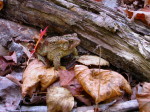 Susun Weed interviewed me about animal magic on her Wise Woman Radio program.
Susun Weed interviewed me about animal magic on her Wise Woman Radio program.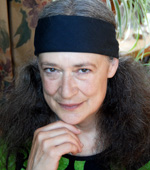 Order Invoking Animal Magic on Amazon here,Or go to book website here.
Order Invoking Animal Magic on Amazon here,Or go to book website here.
 I still have three sections on Gunlog Fur’s A Nation of Women to share. The next will be about marriage (check back on December 13) and the final two about gender.
I still have three sections on Gunlog Fur’s A Nation of Women to share. The next will be about marriage (check back on December 13) and the final two about gender.
Just a reminder…..
December 4, 2013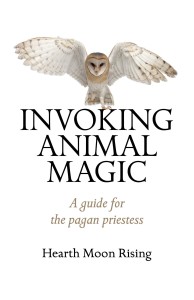 It makes a great gift. Read an excerpt or order through Amazon here.
It makes a great gift. Read an excerpt or order through Amazon here.



